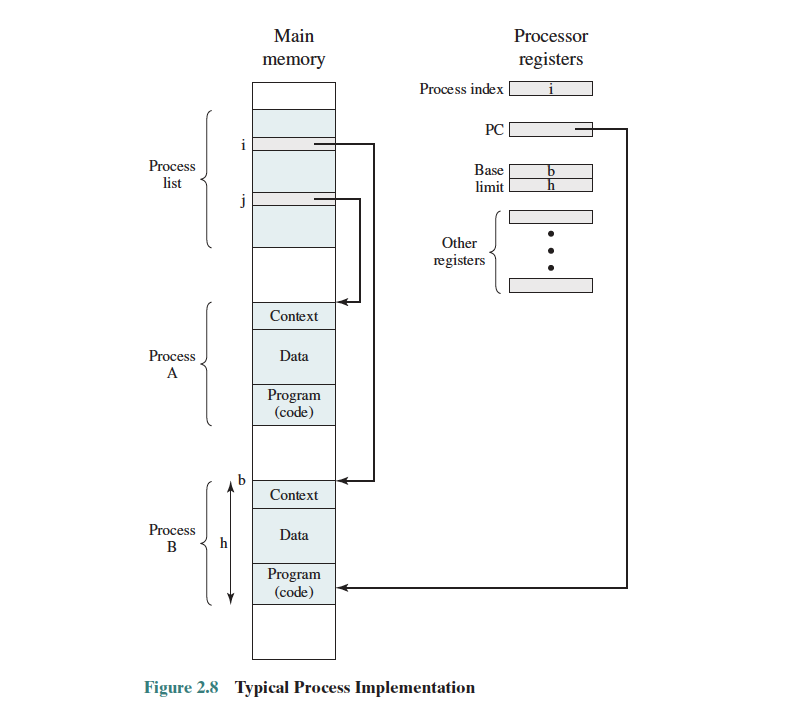Process (Linux)
A process is just a program in execution.
I had a really solid introduction through Hemal Shah, but formally learned through SE350.
A process consists of 3 components:
- An executable program
- Associated data needed by the program (variables, work space, buffers, etc.)
- Execution context of the program
- All information the OS needs to manage the process

A process can be uniquely characterized by a number of elements, including the following:
- Identier (PID)
- State (see 5 State Process Model)
- Priority (relative to other processes)
- Memory pointers (Pointers + shared memory blocks)
- Context data (Registers, PSW, program counter)
- I/O status information (Outstanding I/O requests, used I/O devices)
- Accounting information
The above information is stored in a Process Control Block.
Concepts
- Process Interaction
- Mutual Exclusion
- Process Switch
- Process Creation
- Process Termination
- Process Switch
- Process Suspension
Implementing Processes in an OS
The simplest way is to design a single queue with a Two-State Process Model (see page). However, there are many limitations. This is why we move on to a Five-State Process Model, with the addition of Process Suspension.